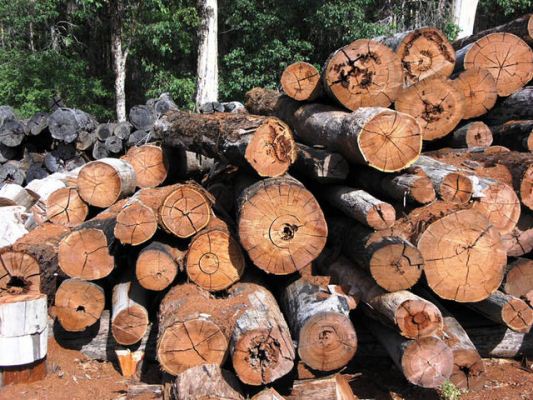Asia-Pacific Economic Cooperation (APEC) member economies are strengthening cooperation in customs control of illegal trade in timber and timber products sourced from the region.
The region’s forestry, trade, customs, and law enforcement officials agreed in a recent meeting in Ho Chi Minh City, Vietnam, to tighten customs management against the flow of illegal goods within the sector.
Enhancing customs checks could mark a turning point in efforts to combat the illicit sale of lumber, furniture, and other wood products coming from the Asia-Pacific’s protected but dwindling forests, APEC said in a statement.
The industry’s black market—worth hundreds of billions of dollars annually and on the increase—is underpinned by demand from member economies of APEC, the region accounting for half of the world’s forest cover and 80% of global timber trade, it added.
“The ease with which unlawfully harvested cargo can move across borders and into the homes and offices of consumers is allowing illegal wood trade to flourish at great cost to the region,” observed the organization
“Trade in illegal wood is accelerating biodiversity loss and destabilizing forest-dependent communities around the Asia-Pacific,” explained Nguyen Van Ha, deputy general of Vietnam’s Forestry Administration.
The economic consequences are significant, he added, including revenue loss and undermining of legitimate businesses by negatively affecting the price of legally harvested products.
Spotting illegal wood before it goes to market is an underlying problem.
“Timber is hard for customs authorities to inspect and verify because of its diversity of species, types and names,” said Vu Ngoc Anh, chair of the APEC Sub-Committee on Customs Procedures.
“We are working in APEC to tackle knowledge and technology gaps at border checkpoints to improve capacity in the region to thwart illegal timber and wood product shipments,” continued Vu, who is also deputy director-general of Vietnam Customs.
With as many as 100,000 tree species worldwide, officials are refining their targeting and forensic identification methods to more accurately and efficiently distinguish between legal and illegal wood at their borders—from taun flooring, rosewood furniture and ramin toys, paint brushes, blinds and billiard cues, to paper, sawdust, and composite wood products.
“The importance of customs and enforcement agency cooperation in APEC to securing wood trade can’t be overstated,” said Jennifer Prescott, US assistant trade representative for environment and natural resources and a co-sponsor of the project. “As illegal wood trade grows in sophistication, it is vital that we grow the sophistication of our tools to address it.”
This includes public-private coordination to align the region’s wood product certification programs, compliance and product legality monitoring approaches, and traceability systems—following the production and distribution networks that bring illegal timber to international markets.
Officials are also sharing guidance to inform their handling of these shipments upon discovery as well as to support more effective preventative action. They are focused on opening lines of communication to curb fake document use, bribery and corruption linked to high-level perpetrators of illegal timber trade.
“Trust between all those monitoring the supply chain and enforcing laws is ultimately needed to reduce and eliminate illegal wood trade,” noted Davyth Stewart of INTERPOL’s Environmental Security Program. “Without it, breakthroughs will remain elusive.”
“Customs are the first and last line of defence against timber smuggling, fraud and illegalities during export, re-export, transit and import but they can’t operate in a vacuum,” said Federico López-Casero of the Institute for Global Environmental Strategies.
Photo: SeanMack









